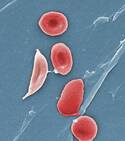USPSTF Reviews Recommendations for Interventions to Prevent Child Maltreatment
Empowering Children with Disabilities: How Pediatric Nurses Offer Vital Support
 The importance of external support systems becomes even more crucial as the number of children with disabilities and other developmental disorders continues to surge. This trend is apparent in academic settings, where there is a rising number of students with disabilities. According to the Pew Research Center, nearly 7.3 million students with disabilities receive education from public K-12 schools in the U.S.
In the midst of this growing trend, pediatric nurses play a vital role in empowering children with disabilities. In this blog, we'll explore the vital support these professionals offer to empower children with disabilities.
(more…)
The importance of external support systems becomes even more crucial as the number of children with disabilities and other developmental disorders continues to surge. This trend is apparent in academic settings, where there is a rising number of students with disabilities. According to the Pew Research Center, nearly 7.3 million students with disabilities receive education from public K-12 schools in the U.S.
In the midst of this growing trend, pediatric nurses play a vital role in empowering children with disabilities. In this blog, we'll explore the vital support these professionals offer to empower children with disabilities.
(more…)Gene Therapy Restores Hearing In Trial of Autosomal Recessive Pediatric Deafness
USPSTF: Statement on Pediatric Screening for Speech and Language Delay and Disorders
NYU Study Finds Sudden Unexplained Death in Childhood May Be Seizure Related
Screen Time in Young Children Linked to Abnormal Sensory Processing
 Response: Atypical sensory processing is common in neurodevelopmental disorders, affecting approximately 60% of children with ADHD and up to 90% of children with autism. Sensory symptoms are associated with hyperactivity, restricted/repetitive behavior, irritability, behavioral problems, and emotional dysregulation. Sensory-related meltdowns and symptoms can be very disruptive to family-life, interfere with family participation in community events and are associated with increased caregiver stress.
Prior to this study there was little understanding of potential risk factors for atypical sensory processing.
The researchers used data from the National Children’s Study to determine the association between early-life screen time and sensory processing outcomes among toddlers.
(more…)
Response: Atypical sensory processing is common in neurodevelopmental disorders, affecting approximately 60% of children with ADHD and up to 90% of children with autism. Sensory symptoms are associated with hyperactivity, restricted/repetitive behavior, irritability, behavioral problems, and emotional dysregulation. Sensory-related meltdowns and symptoms can be very disruptive to family-life, interfere with family participation in community events and are associated with increased caregiver stress.
Prior to this study there was little understanding of potential risk factors for atypical sensory processing.
The researchers used data from the National Children’s Study to determine the association between early-life screen time and sensory processing outcomes among toddlers.
(more…)ASH23: Nemours Study Links Pain Scores with Return ED Rates in Children with Sickle Cell Disease
Lancet: Trial of Vitamin D Supplements to Prevent Fractures in Children
USPSTF: Pediatric Oral Health Screening in Primary Care Evaluated
Study Charts How Executive Brain Functioning Matures Through Adolescence
CDC Reports Outcomes of Pediatric Multisystem Inflammatory Syndrome After COVID
USC Study Evaluates COVID Virus Shedding in Children
- Vascular ring definition
- Causes and symptoms
- How the treatment of vascular ring works
What Is Vascular Ring?
Vascular ring is a heart defect that’s present from birth. A part of the body’s main artery forms a small ring around the trachea (windpipe) or esophagus (the pipe that connects the throat to the stomach). In some cases, the ring can occur around both the trachea and the esophagus, but this is less common. Compared with other congenital heart defects, vascular ring is one of the rare ones. As of today, vascular rings are incredibly rare and occur in less than 1% of babies. (more…)Low Income and Minority Children Risk Impaired Cognitive Function from Environmental Hazards
MedicalResearch.com Interview with:
Dr. Devon Payne-Sturges, DrPH, MPH, MEngr
Associate Professor
Maryland Institute for Applied Environmental Health
School of Public Health
University of Maryland, College Park
MedicalResearch.com: What is the background for this study?
Response: My co-authors and I conducted this study to fill a knowledge gap and to inform the work of Project TENDR. No systematic or scoping review had examined both exposure disparities and the joint effects of combined exposures of environmental neurotoxicants and social disadvantage as they relate to disparities in neurodevelopmental outcomes specifically among children living in the U.S.
Our study is the first to summarize the evidence on 7 neurotoxicants that children in the U.S. are routinely exposed to and we examined both disparities in these exposures and disparities in the effects of those exposures on children’s brain development, cognition, and behavior by race, ethnicity, and economic status.
We reviewed over 200 independent studies spanning five decades from 1974 to 2022 on social disparities in exposure to 7 exemplar neurotoxic chemicals and pollutants, including chemical mixtures, and their relationship with disparities with neurodevelopmental outcomes among children in the U.S.
Birthweight, Gestational Age and Later Cognitive Performance
Biosignatures Allow Single Blood Test to Identify Multiple Causes of Fever in Children
UBC Study Explores Link Between Early Microbiome and Infant Brain Development
USPSTF: Anyone Who Could Become Pregnant Should Take Folic Acid To Prevent Spinal Cord Defects
When It Comes to Blood Pressure Cuffs, Size Matters
USPSTF: Lipid Screening Recommendation Statement for Children and Adolescents
Microplastics and Nanoplastics Released from Plastic Baby Food Containers and Food Pouches
TUFTS GEMINI Study Finds Whole Genomic Sequencing Identifies More Pathogenic Genes than Targeted Panels
Study Finds Children of Moms Who Used Cannabis During Pregnancy More Likely to Use Cannabis Themselves
NEJM: Viaskin Patch Shows Promising Results for Toddlers with Peanut Allergy
Study Uses Visual Attention to Assess How Young Children Learn New Words
 Larissa K. Samuelson, PhD
Professor
Developmental Dynamics Lab
School of Psychology; UK 14th for Research Quality
Psychology, Psychiatry, and Neuroscience
University of East Anglia, United Kingdom
MedicalResearch.com: What is the background for this study?
Response: Words direct the attention of infants, children and adults to mentioned objects in the environment. When someone says “Can you find the candy,” you look to the candy sitting on the counter. This fact is the basis of many tests of infant cognition in laboratories. To find out if a child knows the word “bike” we put a picture of a bike and a truck on a TV screen, say the word “bike” and see if they look at the correct object.
There is also evidence that words can direct attention even if you don’t know what they mean yet. For example, in studies of learning in the lab novel made up words like “modi” can direct children’s attention to specific features of objects. One particular example of this is the “shape bias”. If a two-year-old is shown a novel object and told a novel name, for example “This is my blicket,” and then asked, “Can you get your blicket” and shown one object that matches the named one in shape and another that is made from the same material, they will attend to the one that matches in shape. Researchers think the naming event “This is my…” cues children to look at things that are the same shape because they already know many names for things in sets that are similar in shape; cups are all cup-shaped, keys are all key-shaped, spoons are all spoon-shaped, etc.
Prior research suggests there may be differences in the way children who struggle with language decide what a new word means. For example, children with Developmental Language Disorder do not pay attention to the same things when learning new words as children with typical language development. These children do not look to an object that matches a named exemplar in shape when asked to “get your blicket”. But you can’t diagnose children with DLD until they are 3 or 4. We want to see if we can identify these children earlier, so they can get early support.
(more…)
Larissa K. Samuelson, PhD
Professor
Developmental Dynamics Lab
School of Psychology; UK 14th for Research Quality
Psychology, Psychiatry, and Neuroscience
University of East Anglia, United Kingdom
MedicalResearch.com: What is the background for this study?
Response: Words direct the attention of infants, children and adults to mentioned objects in the environment. When someone says “Can you find the candy,” you look to the candy sitting on the counter. This fact is the basis of many tests of infant cognition in laboratories. To find out if a child knows the word “bike” we put a picture of a bike and a truck on a TV screen, say the word “bike” and see if they look at the correct object.
There is also evidence that words can direct attention even if you don’t know what they mean yet. For example, in studies of learning in the lab novel made up words like “modi” can direct children’s attention to specific features of objects. One particular example of this is the “shape bias”. If a two-year-old is shown a novel object and told a novel name, for example “This is my blicket,” and then asked, “Can you get your blicket” and shown one object that matches the named one in shape and another that is made from the same material, they will attend to the one that matches in shape. Researchers think the naming event “This is my…” cues children to look at things that are the same shape because they already know many names for things in sets that are similar in shape; cups are all cup-shaped, keys are all key-shaped, spoons are all spoon-shaped, etc.
Prior research suggests there may be differences in the way children who struggle with language decide what a new word means. For example, children with Developmental Language Disorder do not pay attention to the same things when learning new words as children with typical language development. These children do not look to an object that matches a named exemplar in shape when asked to “get your blicket”. But you can’t diagnose children with DLD until they are 3 or 4. We want to see if we can identify these children earlier, so they can get early support.
(more…)




























